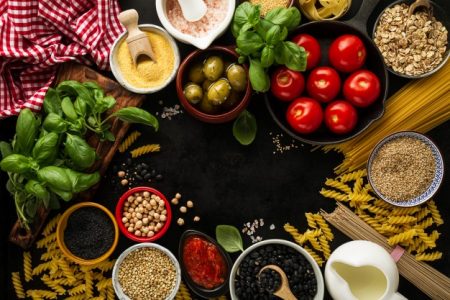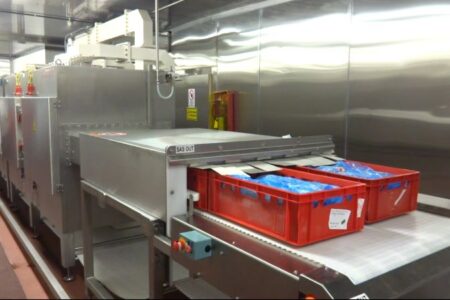Licence to fill

To remain competitive, food and beverage manufacturers have to bring high quality products that cater directly to consumers’ current requirements onto the market, quickly and reliably. In light of this, they need filling machines that offer efficient operation and maximum flexibility.
“Efficiency and flexibility are the key factors for cost effective, sustainable food and beverage production,” notes Birgit Clever. “Alongside automation and digitisation, flexibility is one of the core issues in developing new filling machines and the right equipment.”
If you want to keep production in line with current trends, you need equipment that is as versatile as possible. That sort of scope may relate to the possibility of filling products from a range of segments, with a variety of textures, into the most diverse packaging formats and volumes, using a single filling machine – and doing so at a flexible speed, safely and without complex technical modifications.
Flexibility is so important because consumers are more heterogeneous than ever before. Global food manufacturers which need to vary their product portfolio for each country to which they export are not the only ones facing this challenge. At regional level too, prototype groups of consumers with high buying power that can be counted on one hand do not exist. For any manufacturer who wants to reach a broad range of consumers, flexible production is crucial.
A look at the markets
For consumers in Europe, North and South America, and increasingly also in the Middle East, in addition to safeguarding the product, the shape and design of a packaging form, and its convenience, are vital. Packages are not just units for transporting and storing foods – instead, they also need to cater to consumers’ specific drinking and eating habits. A product that sells must appeal with regard to the design of its packaging, but also in terms of its handling.
Globally, small format beverage packaging in volumes below 200ml is currently enjoying high growth rates – particularly in the Asia region, South America and the Middle East. And small format packages are on upward curve for the future too. Worldwide, up to 2019, the number of small format beverage packages is set for an annual growth rate of 5.4 per cent.
Clever continues, “Demographic change in society also plays a role in packaging design. An example of this is the ‘mature consumers’ group, which is set to become a more and more desirable consumer tier worldwide”.
A report by the United Nations Population Fund (UNFPA) and HelpAge International, Ageing in the Twenty-First Century, concludes that within the next 10 years, there will be more than a billion people worldwide over the age of 60 – around 150 million more than in 2012. By 2050, the number of over 60s will have reached two billion. The phenomenon of the ageing society is an issue that is affecting not only the most economically developed regions, but increasingly also the developing world.
As a numerically powerful counterpole to the mature consumers, the ‘millennials’ and the subsequent ‘generation Z’ also need to be taken into account in the manufacture of products and selection of the right packaging – that is, everyone born from 1997 onwards, a group that already makes up around 25 per cent of the world’s population. By 2020, this figure will be 40 per cent; all the more reason why their food and consumption preferences play a huge role for the food industry.
Dr Thilo Britz says, “Food and beverage packaging has to be designed in such a way that each consumer finds it easy to use, and in particular also for consumers who have special requirements of the packaging in terms of aspects such as lightweight, convenience, the opening and pouring behaviour, or lettering that is easy to read.”
One machine – two formats – multiple volumes
Today’s filling machines from SIG Combibloc are designed to give food manufacturers a wide range of options for flexible, cost effective production. For instance, with a single beverage filling machine, two different carton formats – the combibloc format and the combifit – can be filled. In addition, the machine can do this in several different volumes and with any decor required, so products can be positioned as required to fit the market and the relevant target group.
Dr Britz adds, “In all combibloc and combifit formats with the same base dimensions, switching between different fill volumes takes a matter of minutes. Up to seven different volumes can be filled using a single machine.”
In practice, it works like this: in the filling process the beverage, which has already been prepared and heat treated using UHT equipment, is filled into the pre sterilised carton packs inside the aseptic zone of the filling machine. After the filling process has taken place, the carton packs are ultrasonically sealed above the fill level. This has crucial benefits for protecting the food and its quality, as the seal does not go through the product, so product components do not get caught in the sealed seam. Only after the carton pack has been sealed, spouts may optionally be applied to the packaging externally.
A change of carton design can be implemented without interrupting the production process, and with no wastage at all; the carton sleeves in the filling machine stack are simply switched for the new ones. This means a product can be filled in carton packs with a range of different designs, for instance, under different brand names or for a range of different language regions.
Tailored for every product
In terms of the product variety for filling, SIG Combibloc delivers flexibility. With the filling machines for non carbonated soft drinks and liquid dairy products, low viscosity foods and those with higher viscosity, such as smoothies or dessert sauces, can be filled. With the drinksplus concept, even products with particulate content, perhaps in the form of chunks of real fruits and vegetables or grains, can be filled on standard SIG Combibloc filling machines.
Dr Britz concludes, “A modern machine platform must offer flexibility, superior quality and outstanding reliability, resource efficiency and convincing TCOs. We’re focusing on these characteristics in the development of our future machine generation. Flexibility will be at the heart of our next machine platform, which will equip our food and beverage industry customers for the modern production system of the future and give them genuine added value – tailored in a modular style to meet individual needs and cater to the requirements of the respective markets.”



